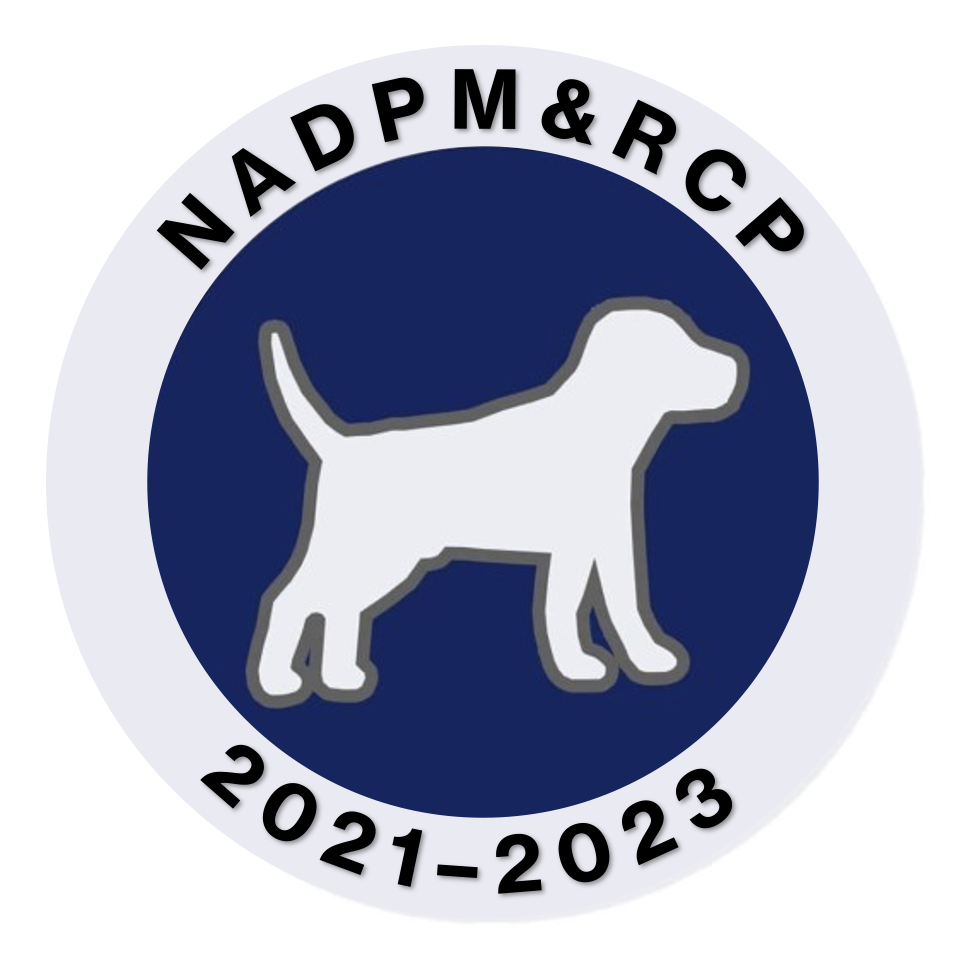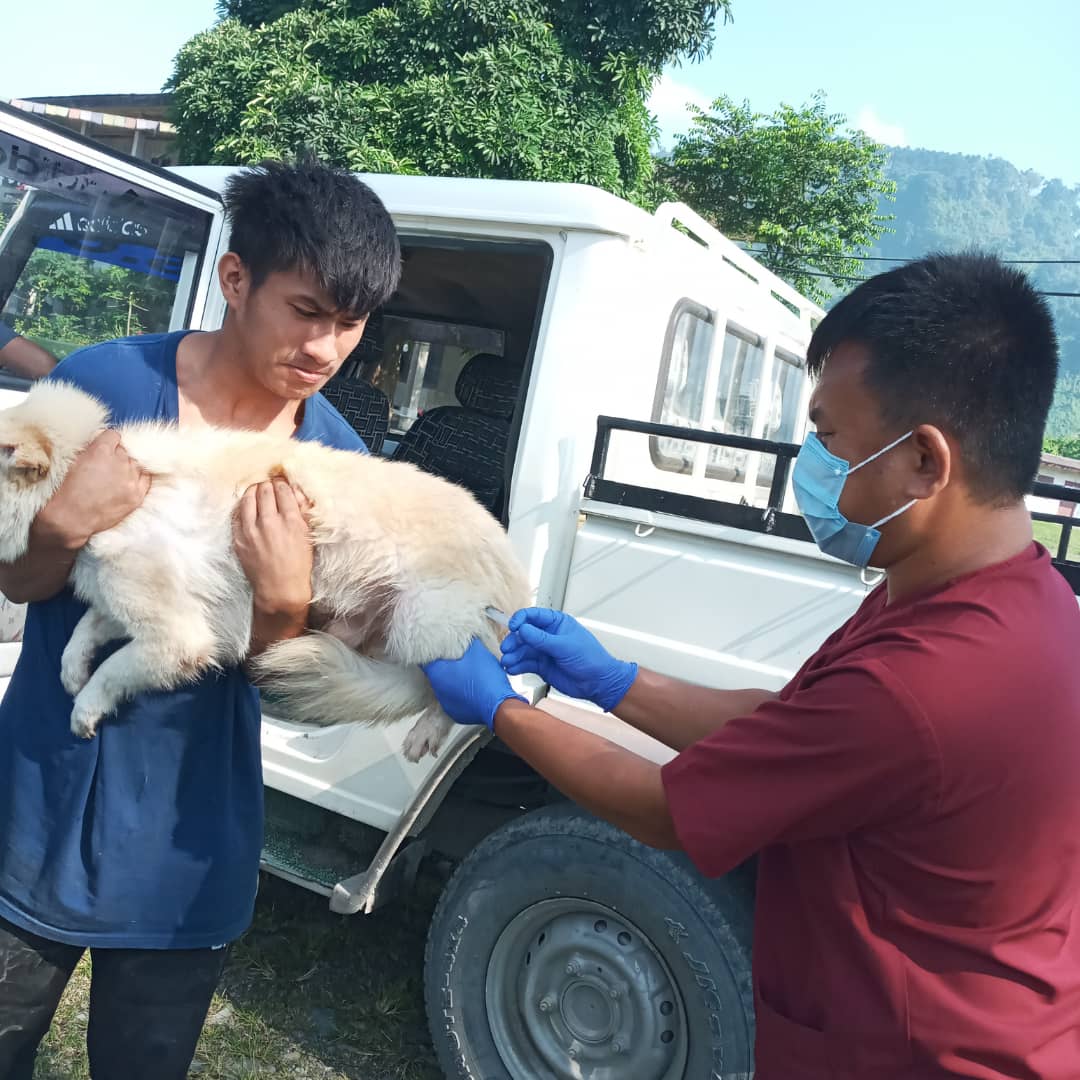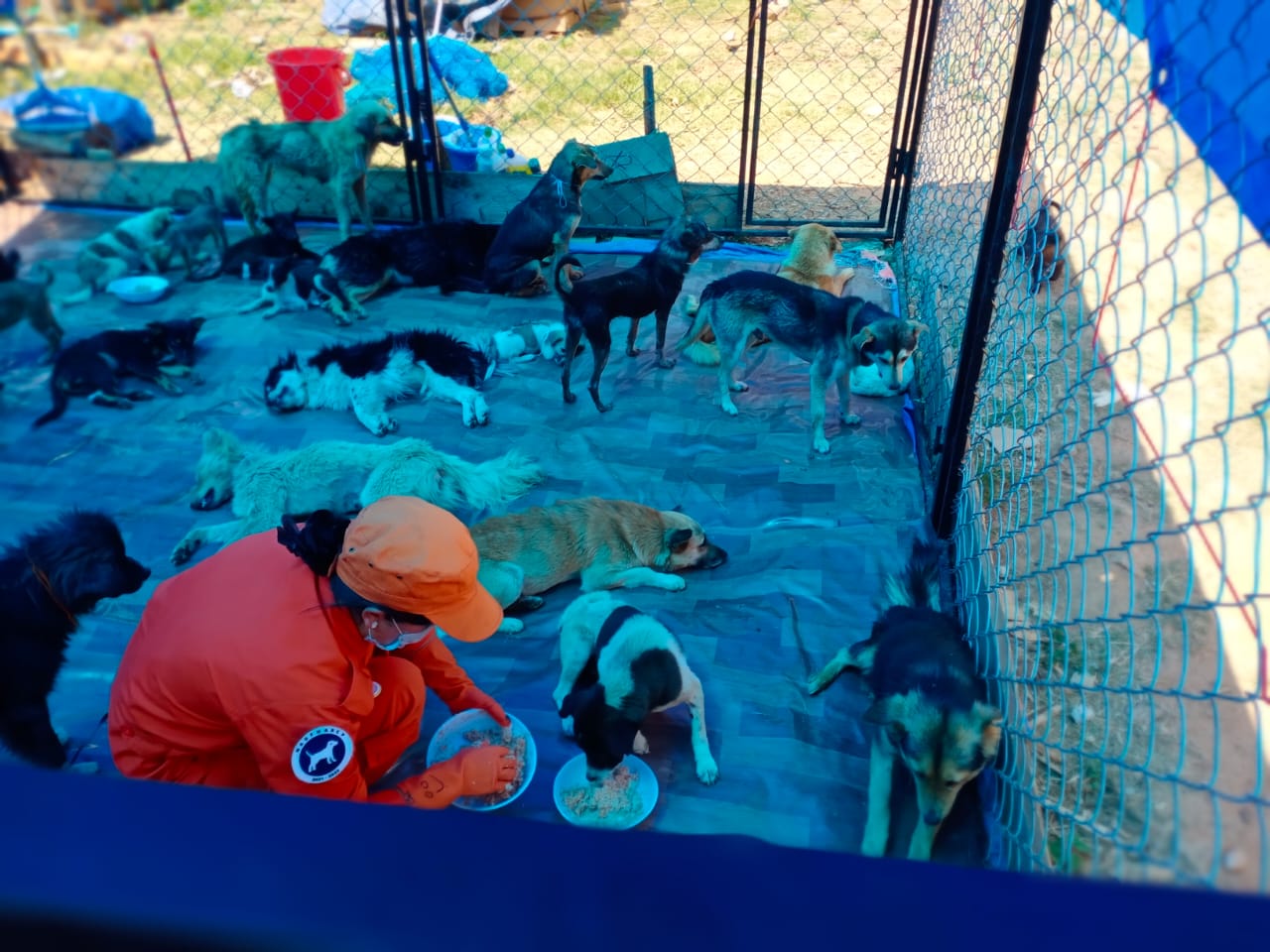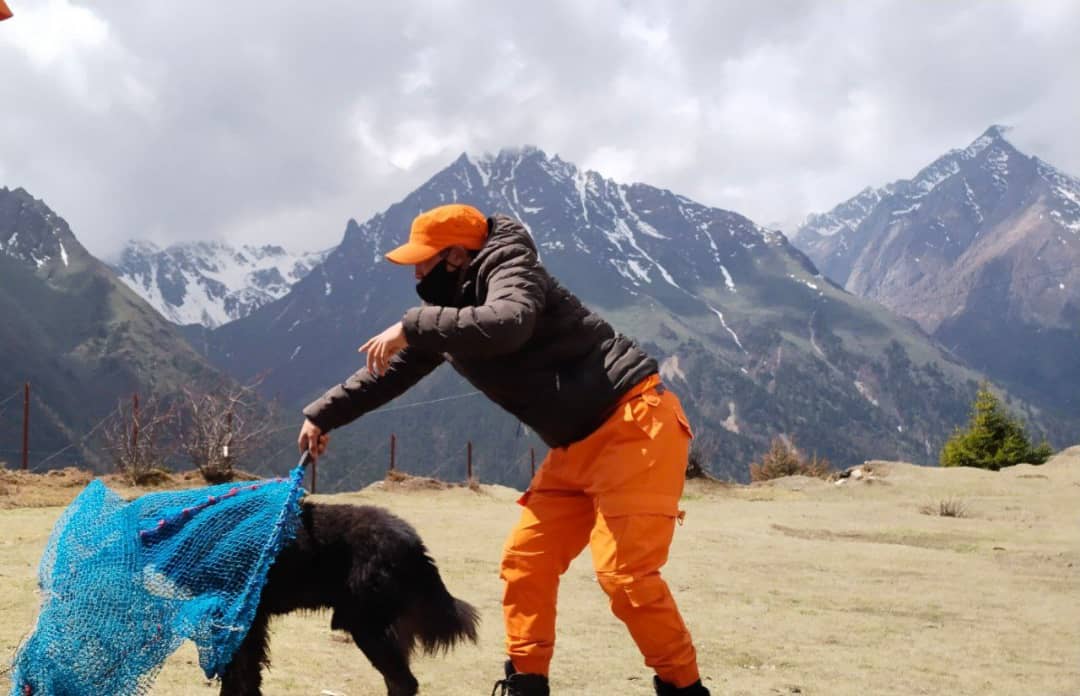NATIONWIDE ACCELERATED DOG POPULATION MANAGEMENT AND RABIES CONTROL PROGRAMME

The problem of the growing dog population in Bhutan
In many parts of the world, dogs hold a special place in society. Dogs play an important role by offering companionship and various practical services, including guarding crops and livestock, search and rescue during emergencies, therapy, and security. The worldwide dog population is estimated to be more than 700 million. Concerningly, about 75% of them are free roaming with no direct human supervision.
A rising free-roaming dog population can lead to increased concerns over public health, including the potential transmission of zoonotic diseases such as rabies. Annually, millions of people fall victim to dog bites. Around 99% of rabies cases in humans are attributed to dog bites and unfortunately, free-roaming dogs contribute to sustaining the disease transmission in many countries, particularly in Asian and African continents.
Additionally, the growing dog population poses challenges related to animal welfare, as these dogs may face harsh living conditions and lack access to necessary care and resources. Furthermore, dogs can exacerbate societal issues by littering the environment and causing night-hour noise disturbances.
In Bhutan, the community’s compassionate attitude toward animals has contributed to the dog population’s rapid growth over time. Dogs are provided with food and shelter by individuals even in the absence of an owner. Some of the key issues arising from the growing dog population in Bhutan include its effects on public health, environmental littering, the potential transmission of zoonotic diseases, and disturbances in the community due to barking and biting. The national dog bite data showed that 6873 people fell victim to dog bites in 2021 alone. Further, between 2006-2023, 19 people have died due to dog-mediated rabies. These challenges posed by the increasing dog population have been recognized for several decades, prompting the government to implement intervention measures aimed at addressing the growing dog population and its related issues.
History of dog population management in Bhutan
Considering the number of problems associated with the increasing free-roaming dog population, the Royal Government of Bhutan (RGoB) implemented different approaches towards the control of the dog population and rabies in Bhutan. Dog population management was initially implemented using methods that were popular and widespread at the time. Subsequently, these methods have evolved over the years based on the lessons learned from their application. In the 1970s and 1980s, the nation had undertaken an array of measures in attempts to tackle the problem. However, those measures received poor acceptance and support from the community due to religious and cultural reasons. By the 1990s, a lot of translocations were carried out to address the localized dog population explosion. In addition to its failure to achieve the desired result, in a few instances, this approach even led to litigation cases in the courts. In 2008, the government earmarked Nu. 27 million for the establishment of dog shelters nationwide to house free-roaming dogs. Nevertheless, this approach proved unsuccessful due to issues relating to sustainability and the welfare of the animals involved. Although sterilization was always understood as an effective humane method of dog population control, which was carried out in the 2000s, the scale, and manner in which they were conducted were unsustainable and did not achieve the necessary coverage. All these strategies yielded only short-term results.
In 2009, the Department of Livestock and Humane Society International (HSI), USA, collaborated to address the dog population issue. The collaboration adopted the “capture-neuter-vaccinate-release” (CNVR) protocol for the first time in the country. The project was executed in three phases, with each phase spanning three years. The initial two phases, from 2009 to 2015, were carried out through a 50-50 partnership, involving both partners contributing resources equally in both cash and in-kind. A total of Nu. 60.848 million was spent during this period. In the third phase (2016-2018), the partnership was based on a 65% contribution from RGoB in cash and a 35% contribution from HSI which were all in-kind. A total of Nu. 10.758 million was spent during the last phase. Over nine years of collaboration, about 92,000 dogs were sterilized and vaccinated against rabies. Besides sterilization and vaccination of dogs, the project also carried out a dog population and KAP survey to determine the baseline information regarding the dog population and the community’s perception of dog population management. To ensure that this collaboration was sustained through engagement and empowerment of the community, the Community Animal Birth Control Program (CABC) as a component of the program was inculcated in 2014. Through this project, all the field veterinarians and some para-vets were trained on CNVR protocol. The collaboration ended in June 2018.
Based on the findings of the KAP survey, a “Community Engagement” proposal for Thimphu and Paro was developed. This project proposal described a new model of dog population management by engaging communities for long-term sustainability. The project was to be piloted in Paro and Thimphu between August 2021 to June 2023 with Nu. 5.8 million budget support from Humane Society International. This project coincided with the implementation of NADPM and RCP.
Limitations of the past interventions
While the efforts to manage the dog population intensified with the adoption of different approaches, these approaches failed to yield the desired outcomes mainly due to the following reasons:
- Undefined targets: One of the key limitations common to all the approaches that Bhutan adopted in the past to manage dog population and rabies was the lack of specific and measurable targets. Without this, it was difficult to assess the success of the approaches.
- Lack of synchronized operational modality: Since the previous approaches were nationally coordinated with limited consultation with the local governments, the work plans were not synchronized which led to the implementation of DPM activities erratically. Furthermore, the sterilization programs were not implemented simultaneously across the country.
- Limited resources: The limited human and financial resources restricted the scope of these projects, preventing them from covering all districts in a short timeframe.
- Incomplete coverage: 100 percent coverage was not targeted, thus allowing some dogs to reproduce, perpetuating the problem.
- Minimal stakeholder and community engagement: The lack of awareness among the people regarding the importance of dog population control, combined with the strong religious sentiments within the communities, resulted in public resistance to the implementation of the measures adopted in the past. Sterilization programs conducted by the livestock sector in isolation from community involvement failed to achieve the desired results, leading to the inadequacy of small-scale, sporadic sterilization efforts.
- Lack of exit strategy: Without a clear and well-defined exit strategy, it was difficult to sustain the minimal and short-term achievements made through the implementation of those programs.
The Flagship Program – National Waste Management and Stray Dog Population Control (NWM & SDPC) Flagship Program
Despite the attempts to manage the dog population with all the approaches at the disposal of the RGOB, the dog numbers continued to increase. Problems related to dog bites and nuisances like night-time barking continued to be prominently featured in the mainstream media. Recognizing the urgent need to continue and reinforce efforts to manage the dog population in the country, the government launched the National Waste Management and Stray Dog Population Control (NWM & SDPC) Flagship Program in March 2020.
The three-year program’s goal was to achieve a minimum 95 percent sterilization and vaccination coverage of free-roaming dogs; 100 percent registration and sterilization of owned dogs; and to reverse the ratio of owned to unowned dogs from 30:70 to 70:30 by 2023. Further, the DPM component of the NWM & SDPC Flagship Program also aimed at achieving zero dog-mediated human rabies deaths by 2030. The three-year (March 2020 – February 2023) NWM & SDPC Flagship Program with a proposed budget of Nu. 115 M began in March 2020. The implementation of the program covered five Dzongkhags of Bumthang, Haa, Paro, Thimphu, and Tsirang, sterilizing a total of 9,147 dogs, with the coverage ranging from 80 percent to 94 percent.
THE NATIONWIDE ACCELERATED DOG POPULATION MANAGEMENT AND RABIES CONTROL PROGRAM
About one year into implementing the NWM & SDPC Flagship Program, His Majesty the King granted a Royal Audience to officials from the Department of Livestock, De-suung organization, and His Majesty’s Secretariat on July 30, 2021. His Majesty directed the Department to devise a swift and comprehensive plan to control the free-roaming dog population in a professional, humane, and compassionate manner.
Subsequently, a nationwide sterilization initiative, the Nationwide Accelerated Dog Population Management and Rabies Control Program (NADPM&RCP) was launched. The blueprint was developed to achieve effective dog population management with clear, time-bound goals, increased budgetary support, robust stakeholder and community engagement, strong policy backing, a focus on a “whole-of-nation” approach, and well-defined exit strategies. The following were the program’s objectives:
- Achieve 100 percent free-roaming dog sterilization and eventual freedom from free-roaming dogs.
- Ensure responsible pet ownership through digital identification and registration of all pet dogs.
- Manage feral dog population.
- Control rabies through intensified vaccination campaigns and achieve the global goal of “0 by 30” – zero human death due to dog-mediated rabies by 2030.
- Conserve native Chang-khyi breed.
In partnership with the De-suung Office, the Department of Livestock implemented the program in different phases, namely the Nationwide campaign, Mopping, and Combing, covering 20 Dzongkhags and four Thromdes in less than two years.
The program was implemented with a total budget of Nu. 295 million and a total of 12,812 personnel, including 9036 De-suups, were engaged. To meet the human resource requirement to implement the nationwide program, the HR capacity-building process was initiated by the Department through On-the-job training using national experts. Within two years of implementing this program, remarkable achievements were made, including a nationwide 100 percent sterilization coverage of free-roaming dogs and the vaccination of over 90 percent of these dogs. The key accomplishments include:
- Sterilization of 61,680 dogs (91.2% unowned and 8.8% owned).
- Microchipping and registration of 32,544 pet dogs.
- Anti-rabies vaccination of 61,331 dogs (91.1% unowned and 8.9% owned).
- Amendment of Livestock Rules and Regulations, 2022.
- Construction of the Changkhyi Conservation Centre (CCC) for native breed conservation.
To celebrate this historic achievement, a closing ceremony was held on October 27, 2023, in Thimphu. The Hon’ble Prime Minister and other dignitaries graced the occasion. During the closing ceremony, certificates of recognition were awarded to the Dzongkhag and Thromde Administrations, and an agreement of commitment to sustaining the achievements was signed between the Director, Department of Livestock, and the respective Dzongdas and Thrompons. Similarly, program closing ceremonies were held in Phuentsholing, Bumthang, and Trashigang on October 30, 2023, to cover the remaining regions.
Furthermore, in recognition of the excellent partnership, the De-suung organization was awarded a certificate of commendation. Similarly, in recognition of their support, the key stakeholders namely the Department of Forests and Park Services, Bhutan Power Corporation, and Animal Welfare Organizations including the Royal Society for Protection and Care of Animals, Jangsa Animal Saving Trust, and the Humane Society International were awarded the certificate of appreciation.
Born from the auspicious initiative of His Majesty the King, the program garnered unparalleled support, unwavering commitment, and collaboration from policymakers, government organizations, private agencies, local government, and the communities. It was embraced as a national endeavor at all levels, aligning with our King’s vision to create a healthier and safer Bhutan for all.
With the achievement of this extraordinary, unprecedented, and historic milestone, Bhutan takes a significant stride toward its vision of becoming a nation free from free-roaming dogs and dog-mediated human rabies. The journey ahead demands unwavering support, commitment, collaboration, and dedication from all the stakeholders and citizens to sustain this historic milestone.
For further inquiries, please email:
Department of Livestock (DoL): dol@moal.gov.bt
National Centre for Animal Health, DoL: ncah@moal.gov.bt
161 total views, 2 views today




